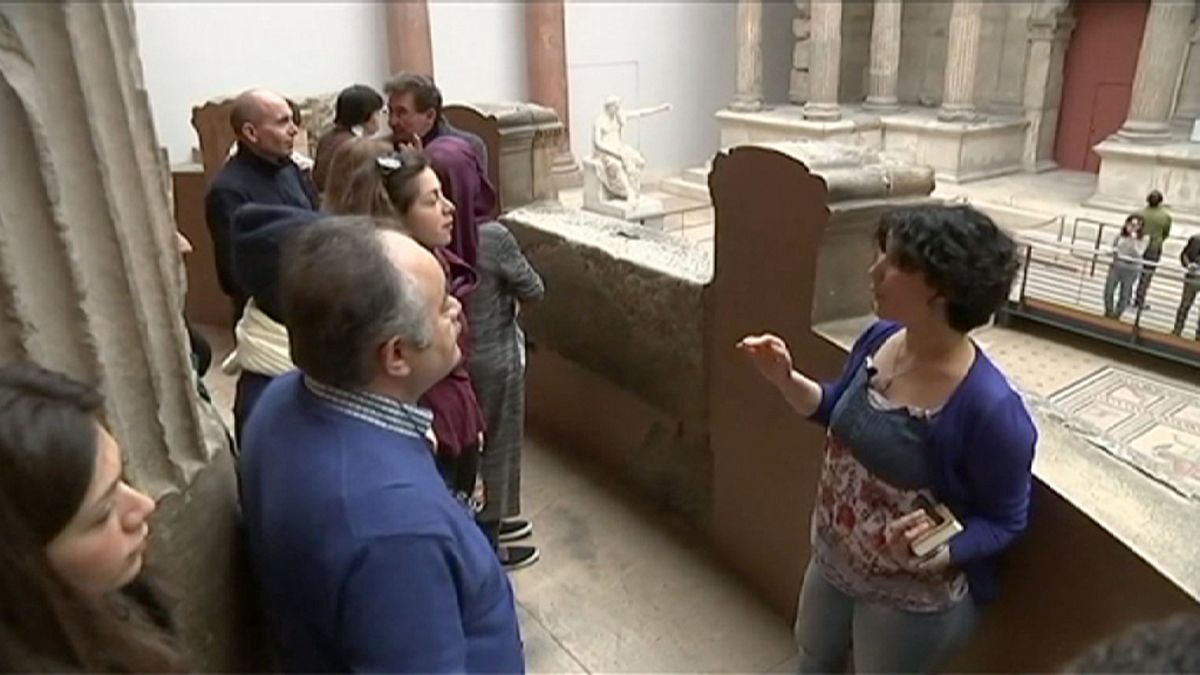Arabic-language guide Razan Nassreddine says Syrian refugees visiting Berlin’s Museum of Islamic Art often ask her how and when the artefacts clearly
Arabic-language guide Razan Nassreddine says Syrian refugees visiting Berlin’s Museum of Islamic Art often ask her how and when the artefacts clearly marked as stemming from their war-torn country ended up in the German capital.
Others jokingly wonder if the shrapnel holes on centuries-old palatial facades and gates brought from the Middle East were caused by fighting between Syrian President Bashar al-Assad and the rebels seeking to unseat him.
More than 1,600 refugees from Syria and Iraq have visited the museum since November, when it launched the Multaka (or “meeting point” in Arabic) project, which trains refugees from those countries to become Arabic tour guides for their peers.
“What we see here is evidence that our region, the Levant, was always a place where different religions and cultures co-existed,” said 35-year-old Syrian visitor Zafer El-Sheikha, standing outside The Aleppo Room, where 400-year-old ornamental paintings depict Jewish, Christian and Islamic themes.
“When I look at what is happening there now, it makes me sad,” added El-Sheikha, who came to Germany with his wife six months ago from a town near Damascus.
At the Mshatta Facade, which was excavated in Jordan in the 19th century and presented as a gift from the Ottoman sultan to the German emperor in 1903, Nassreddine explains to a group of Syrian refugees who attend the same German language class that the shrapnel holes were caused by a bomb during World War Two.
“It makes me happy that Syrians from all walks of life, old, young, religious, secular, opposition, regime supporters come here and are happy to see something from Syria,” said Nassreddine. She is also Syrian though came to Germany in 2012 from Spain, where she had been a student.
Museum director Stefan Weber, who speaks perfect Arabic, said refugees often said after visits that the impressive collection makes them “hold our heads high”.
“One of the goals of the project is to tell people who lost their homes that there is still something to be proud of and this has worked out well,” he said.
